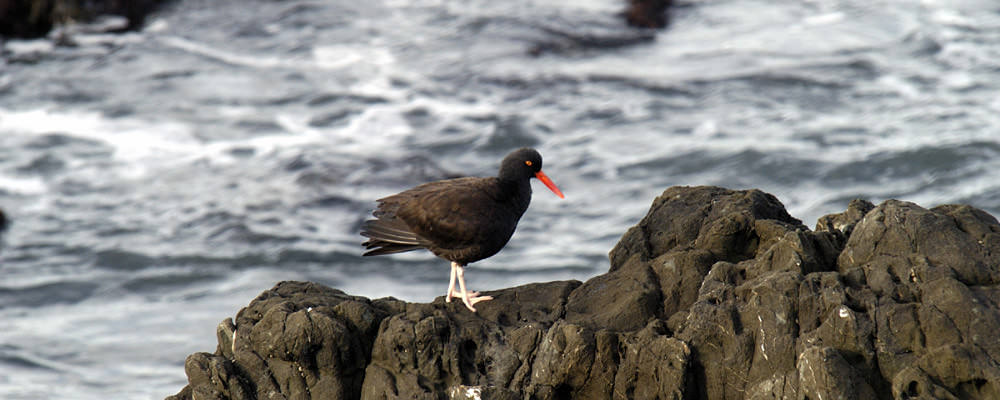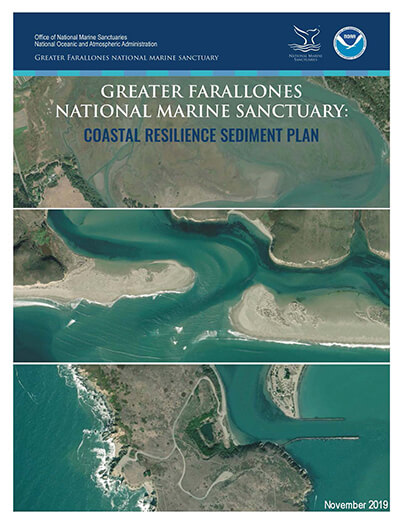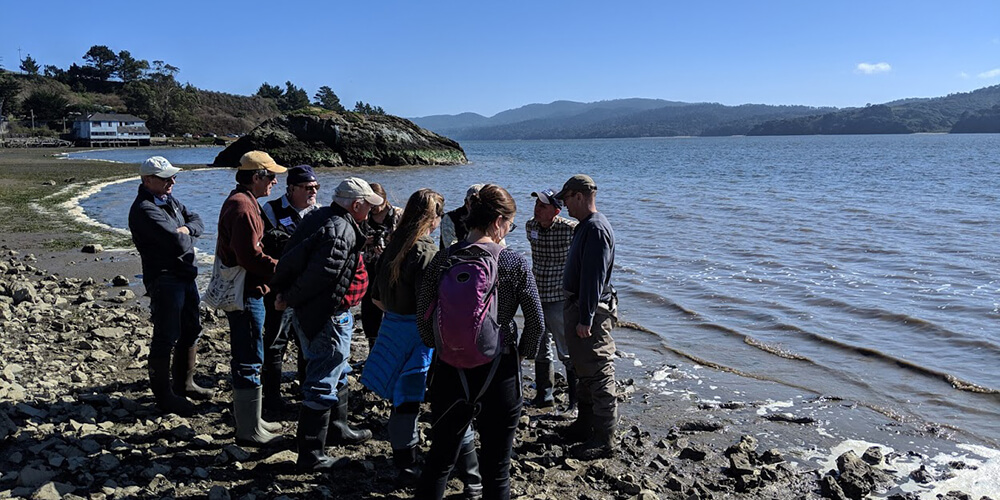
In November 2016, Greater Farallones National Marine Sanctuary released its Climate Adaptation Plan (PDF, 700 KB), the result of a 2-year process to characterize climate impacts and vulnerabilities to Sanctuary resources along the North-central California coast and ocean, and to develop management strategies to respond to and decrease those vulnerabilities, ultimately enhancing resource resilience to climate impacts. The plan details 26 strategies the Sanctuary will consider in its goal to increase coastal resilience to climate impacts.
Adaptation in Action

Following the release of the 2016 Climate Adaptation Plan, the Sanctuary has started implementing 9 of the strategies detailed, with current climate adaptation efforts focused on three critical areas:
Coastal Sediment Management: With one-third of the Climate Adaptation Plan's strategies focusing on better understanding and managing sediment along the coast as an effective tool for increasing climate resilience, the Sanctuary developed the Sediment in the Sanctuary program and the Coastal Resilience Sediment Plan (PDF, 4.96KB), a comprehensive and collaborative approach to climate-informed sediment management along the North-central California coast. The Sanctuary has also led the establishment of the new North-central California Coastal Sediment Committee to support coastal resilience through consensus-driven recommendations along Sonoma, Marin, San Francisco, and San Mateo coastlines.
Bull Kelp Recovery: In 2018, the Sanctuary Advisory Council convened a working group to identify the management, restoration and research needed to increase climate resilience of bull kelp forests and the associated nearshore fisheries that rely on them. The Greater Farallones Association then developed a comprehensive Bull Kelp Recovery Plan based on the Council's recommendations for the Sanctuary and California Department of Fish and Wildlife to jointly implement with the Association and partners. More information is available here.
Native Oyster Restoration: In 2019, the Sanctuary Advisory Council evaluated key regional information available for Olympia oysters in Tomales Bay and approved 24 recommendations for the Sanctuary to take for a more resilient Tomales Bay, focused on increasing the native Olympia oyster population. Based on these recommendations, Sanctuary staff presented 26 activities to the Council during their May 2020 meeting. These activities will serve as the foundation for a future Sanctuary Action Plan for the Restoration of Olympia Oysters in Tomales Bay.

Adaptation Planning
From 2013 - 2016, the Sanctuary led the Climate-Smart Adaptation Project for the North-central California Coast and Ocean through collaboration with Bay Area Ecosystems Climate Change Consortium, California Landscape Conservation Cooperative, EcoAdapt, Greater Farallones Association, Golden Gate National Recreation Area, National Park Service Pacific West Region, Point Blue Conservation Science, Point Reyes National Seashore, and the US Fish and Wildlife Service. The goal of the project was to enable marine resource managers to respond to, plan, and manage for the impacts of climate change to habitats, species, and ecosystem services (termed “focal resources”) within the North-central California coast and ocean region. The 2016 Climate Adaptation Plan was a direct result of this project.
To meet the project goal, the following overarching objectives were achieved:
- Produce scientifically sound vulnerability assessments of focal resources through expert elicitation and literature review.
- Convene a Working Group of the Sanctuary Advisory Council to develop and prioritize climate change adaptation recommendations that can be feasibly implemented by managers, while considering a range of plausible future climate scenarios.
- Develop an implementation plan for sanctuary management based on the approved adaptation actions.
- Serve as a pilot climate-smart adaptation project for other marine protected areas, such as national marine sanctuaries, statewide, nationally, and internationally.
Detailed project description (PDF, 2.3 MB)
Final Documents
Focal Resources Workshop Summary Report (2014) (PDF, 554 KB)
Climate Change Vulnerability Assessment for the North-central California Coast and Ocean (2015)
Climate-Smart Adaptation Report of the Sanctuary Advisory Council (2016) (PDF, 1.1. MB)
Supporting Documents and Resources
Focal Resources Workshop (2014)
Vulnerability Assessment Workshop (2014)
Final List of Focal Resources (2014) (PDF, 75 KB)
Climate Change Vulnerability Assessment for the North-central California Coast and Ocean (2015) (PDF, 230 KB)
Climate-Smart Adaptation Working Group Members (2016) (PDF, 96 KB)
Adaptation 101: Foundational Elements and Key Steps (2016) (webinar)

